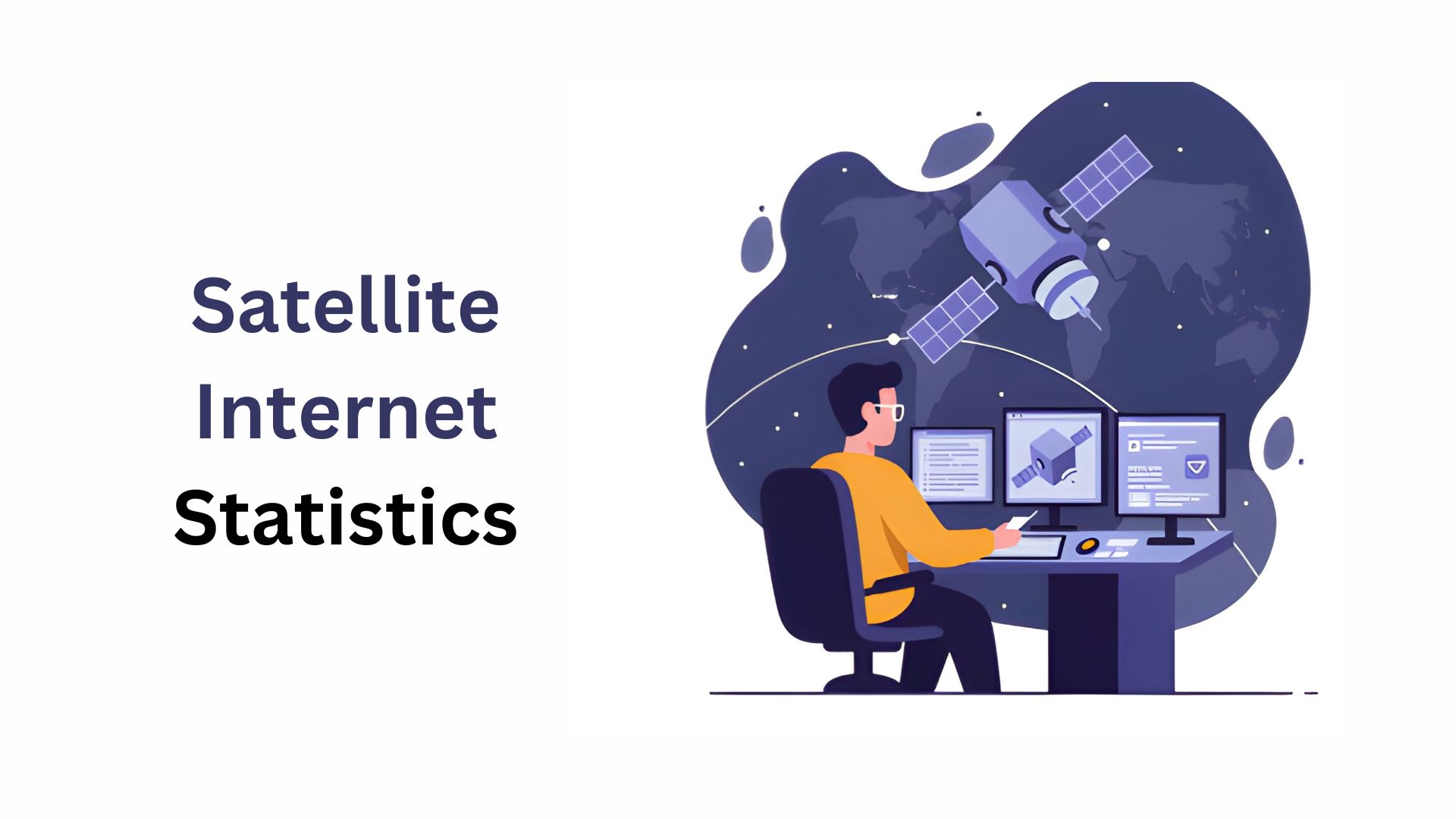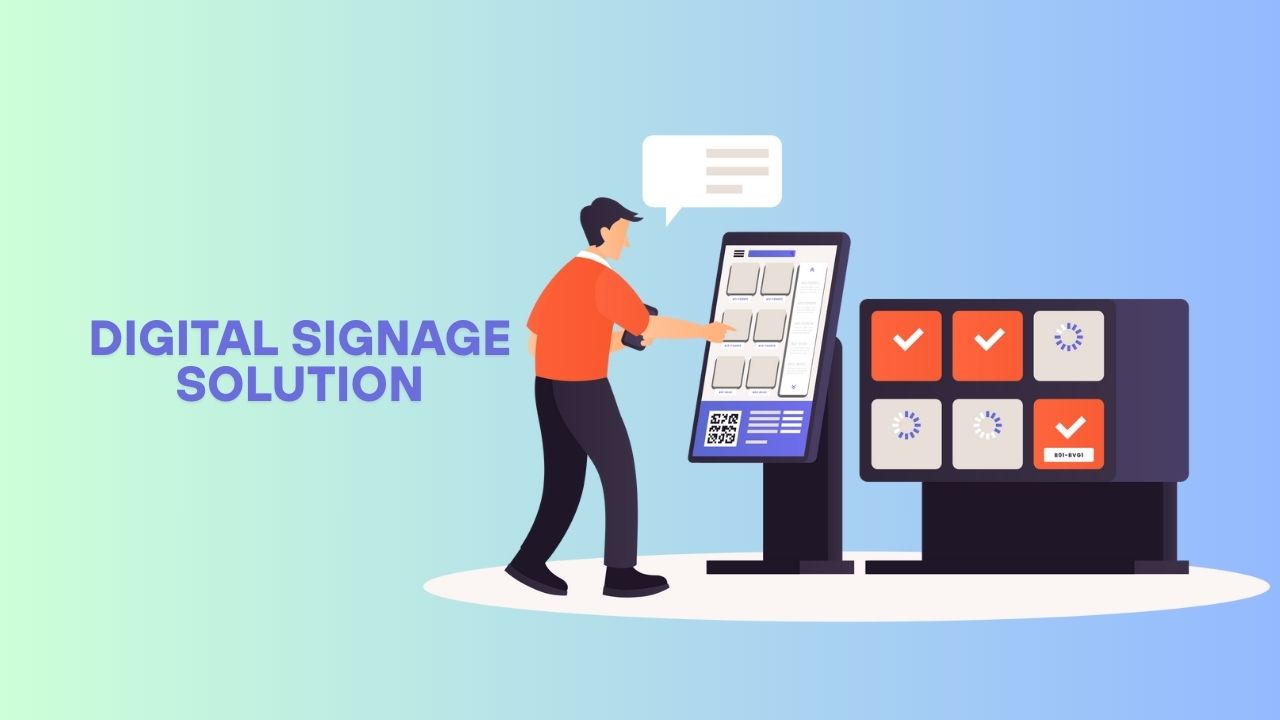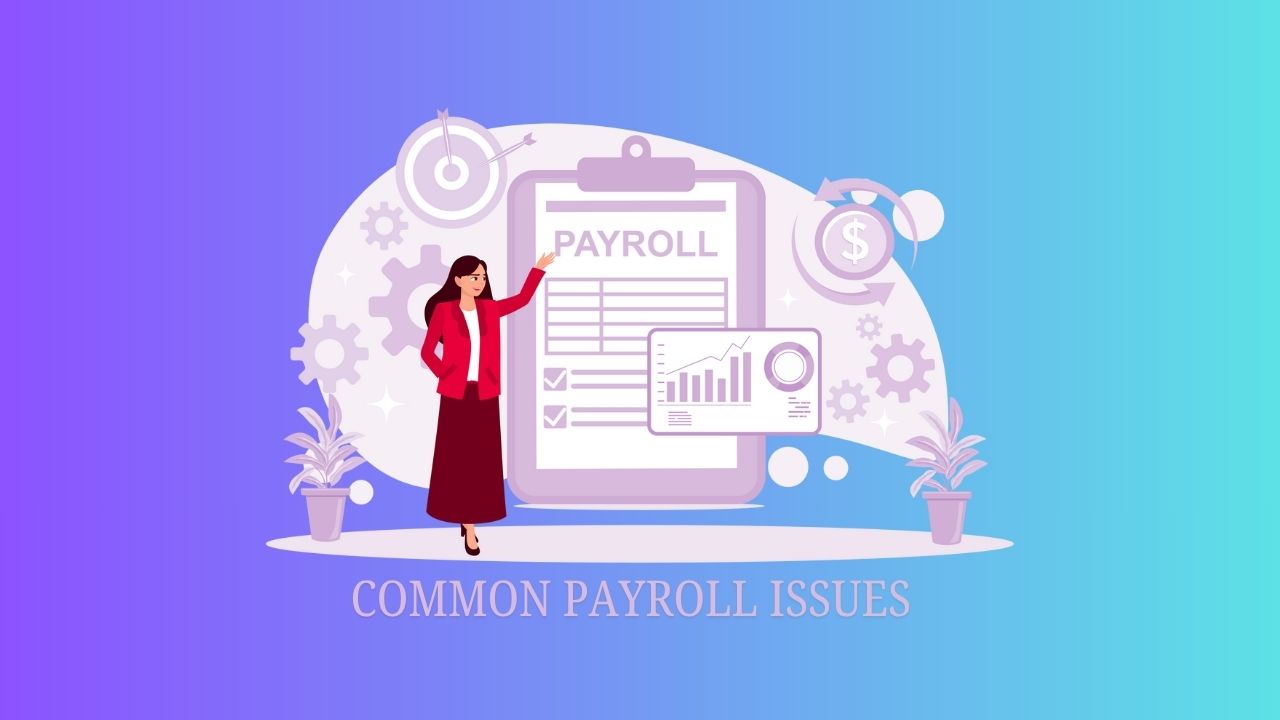Video Testimonial Statistics And Facts (Update 2025)
Updated · Aug 14, 2025

Table of Contents
- Introduction
- Editor’s Choice
- What is A Video Testimonial?
- Why Video Testimonials Matter?
- High ROI Power of Video Testimonials
- Purchase Decisions Are Driven By Video Testimonials
- Video Testimonial Production Statistics
- Video Testimonials Influence B2B Marketing
- Testimonials Promote Brand Trust
- Time Challenges In Producing Testimonial Videos
- Video Marketing And Advertising Statistics
- How Video Testimonials Help With Engagement, Rankings, And Sales
- Conclusion
Introduction
Video Testimonial Statistics: In the face of marketing nowadays, video testimonials have soared in relevance for brands, appealing with genuineness, emotions, and credibility. In this assuring scenario, while one would ordinarily read a written review, these days, their viewing and listening to real people sharing their experiences cement trust, which in turn helps to cement the buying decision of a customer weighing options.
This article discusses Video Testimonial Statistics from 2024 that go a long way in showing which brands use video testimonials, why these work well, and what kind of problems come in their way.
Editor’s Choice
- 72% of marketers claimed that testimonial videos bring an ROI between 50% and 500%; still, larger companies register higher returns.
- Almost 82% of buyers say that video content influences them in deciding what to purchase.
- 92.4% of B2B customers go through reviews and watch testimonials prior to making purchasing decisions.
- Customers are 2.1 times more likely to remember a testimonial video as compared to a written review.
- Pages with video testimonials are 53 times more likely to be on the first page of Google.
- Videos on testimonials can increase conversion rates by 80% on landing pages.
- 79% of consumers watch videos to witness testimonials concerning a product or company.
- Two out of three people are more likely to purchase after watching a testimonial video.
- 90% of clients prefer the opinion of fellow customers to brand statements.
- 44% of marketers pay upwards of US$15,000 to produce one testimonial video, and 11% pay above US$50,000.
- 78% of companies hold four weeks or more to churn out a testimonial video, with 54% working for over two months.
- 73% of marketers say these could churn out 50% more testimonial videos if the costs and production time were less.
What is A Video Testimonial?
- Video testimonials are recordings of customers sharing opinions and experiences about a product, service, or brand.
- These are mainly used by businesses for marketing to create credibility, trust, and social proof.
- These videos may include real people talking straight to the camera or interviewers being asked about positive experiences.
- These are a lot more effective than written testimonials simply because they show genuine emotions and authenticity; they cement the belief-in-it layer for relatability and persuasiveness.
Why Video Testimonials Matter?
- It shows real-life results, allowing the prospect to understand how one product can fix a problem and is a better way of expressing it emotionally in life.
- This emotional bond also boosts the brand’s credibility. Websites featuring a testimonial video have a 53-fold higher chance of being on Google’s first page.
- Such videos can also emphasise selling points, eliminate objections, and heighten engagement from users, thereby improving SEO.
- Moreover, these can be shared on websites, social media, and elsewhere, and help build brand trust toward pushing an actual purchase, and sales in return, foster loyalty.
High ROI Power of Video Testimonials
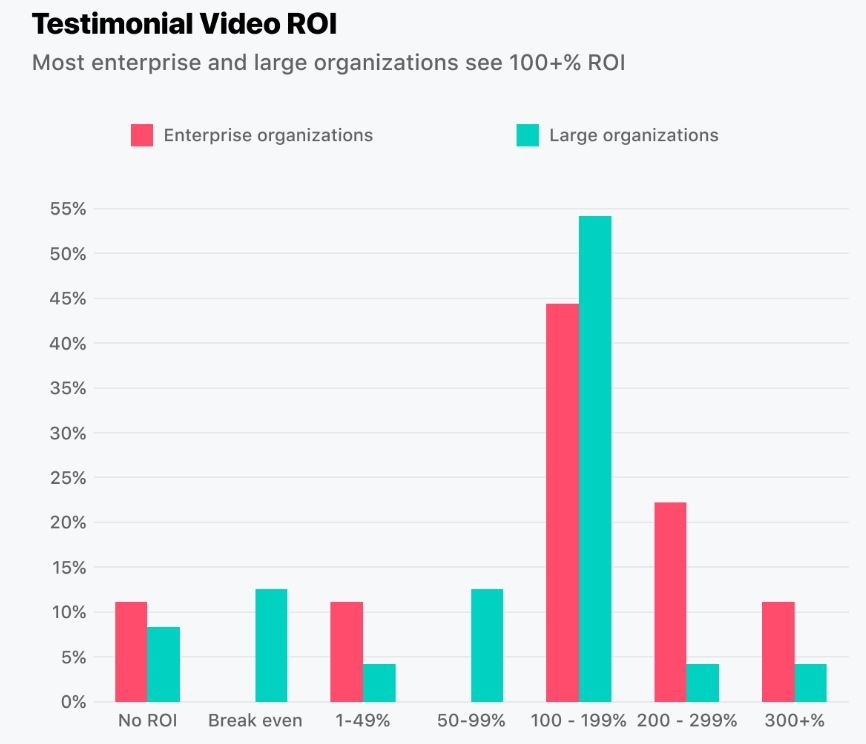
(Source: vocalvideo.com)
- An ask of people who believe in its worth. Businesses feel confident that they reap significant benefits from testimonial videos.
- However, in surveys, 72% of marketers claimed that they see anywhere between 50% and 500% ROI from testimonials, often with remarkable increases in conversion rates.
- The bigger companies tend to achieve better results, as 78% of them claim to have achieved a return on investment of 100% or higher.
- Many of them produce testimonials the traditional way, going about it with professional filming equipment and production crews, including sending teams to videographers at customers’ locations, which can get pretty expensive.
- At any rate, the investment is worth the wait. So well do these testimonials work that they build trust for potential clients.
- They present true scenarios of people recounting their experiences, delve into problem-solving situations concerning a business, and become much more memorable than just a star rating.
- Testimonials can be great complements to various other marketing strategies that return consistent benefits.
Purchase Decisions Are Driven By Video Testimonials
- Being seen as the real thing and trustworthy makes video testimonials the heavyweights in swaying purchase decisions.
- These videos cast the actual picture of a product or service in operation, enhancing comprehension and giving more clarity to its benefits.
- When someone sees strangers-like-themselves benefiting from a product, they immediately picture themselves experiencing the same results, and that does provide some impetus toward the purchase.
- As per Influence Marketing Hub, video testimonial suggests that video content has influenced almost 82% of buyers in their purchasing decisions.
- Videos are the most shareable content online, with 51% of people inclined to share them more than other marketing-type content.
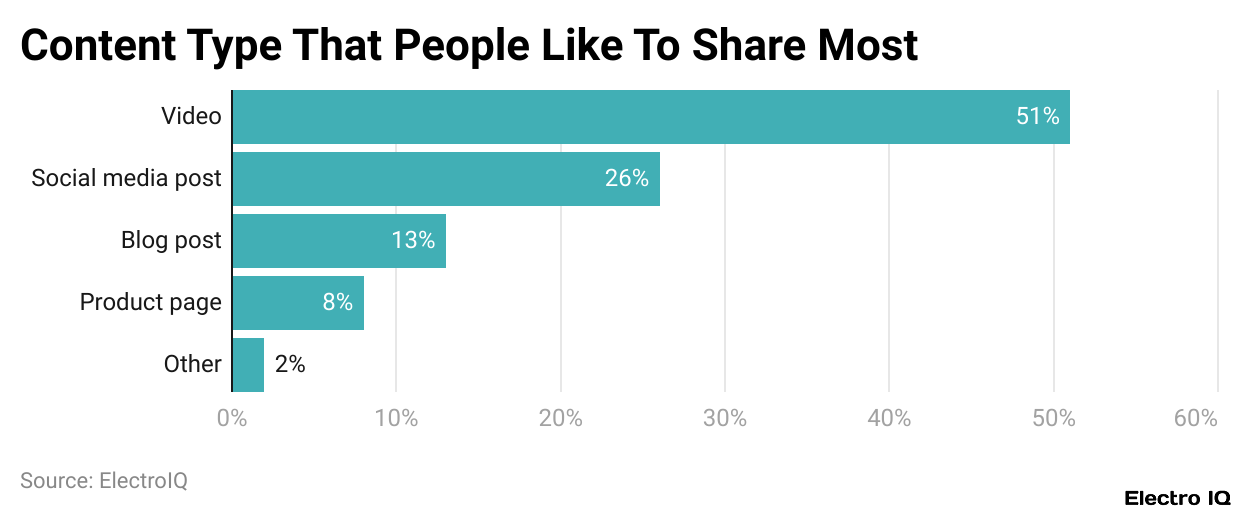
(Reference: influencermarketinghub.com)
- User-generated content (UGC) also has a huge role to play: 90% of people have purchased a product under the influence of a recommendation from friends or family, and 82% would buy more from brands that push UGC in their marketing.
- In the B2B world, some 92.4% of buyers read reviews and watch testimonials before they consider purchasing.
- Testimonial videos hold a stronger place in people’s memories—2.1 times more than written reviews.
- Quality is slowly edging out price as the prime factor in brand loyalty, with 53% of consumers putting it above price, against 37% who consider price to be the primary factor.
- Lastly, customers who see testimonial videos on product pages are more likely to buy the product compared to those who are exposed to no such videos or don’t bother watching them.
Video Testimonial Production Statistics
- Even though video testimonials work like a charm, time and budget constraints seem to have their brands struggle in production.
- For these testimonials to pack a punch, they need to be made à la high-quality, which means going down to visit one’s customers and hiring a professional videographer to do the shoot—a costly and time-consuming affair.
- Some 35% of video marketing content is created from scratch, while 48% of marketers employ a mixture of original footage and pre-made templates.
- In 2024, 85% of the video marketers are willing to keep spending on videos or increase their expenses for videos, and 49% say that these costs are going up.
- Creation of testimonial videos is probably one of the most expensive types. About 44% of marketers splurge above US$15,000 on one single testimonial video when employing a third-party agency, while 11% spend more than US$50,000.
- Due to the exorbitant costs associated with these, 73% of marketers confess to having created 50% more testimonial videos if the cost had been less.
- Alongside cost, time presents another barrier: 54% need at least two months to make a testimonial video, with 78% claiming that it usually takes more than four weeks.
- Similarly, 73% believe they could make at least 50% more if the production time were shorter.
- For some, it’s not just depriving them of time or money, since 31% of SMBs confess to avoiding collecting testimonial videos because it’s too difficult.
- Due to all these barriers, brands never seem able to produce as many testimonials as they would like, even though testimonials have been proven to affect purchase decisions and conversions.
- Most marketing teams typically produce between two to nine testimonial videos a year.
Video Testimonials Influence B2B Marketing
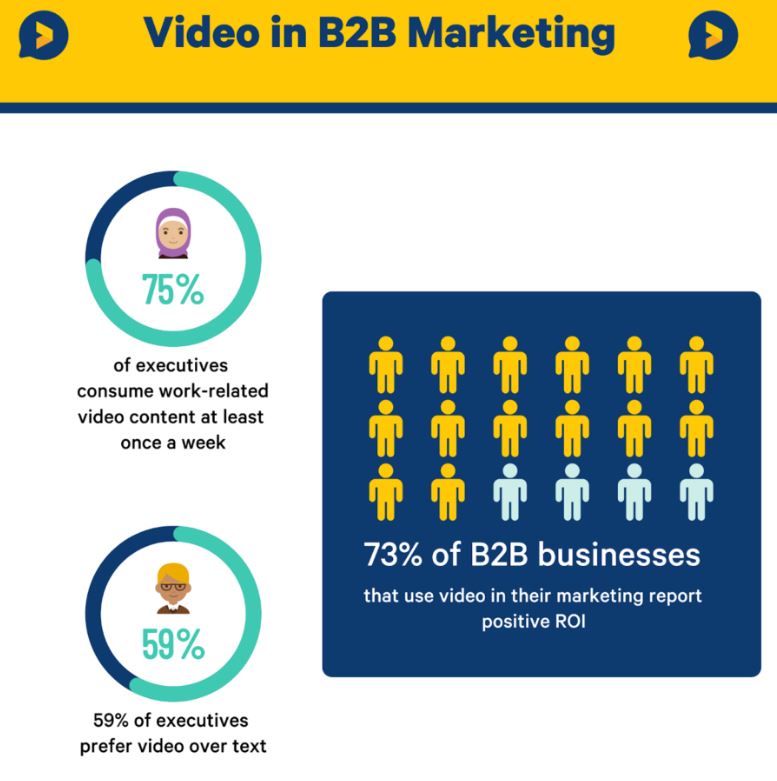
(Source: trustmary.com)
- Due to video testimony, an emotional connection is built between the target audience and the production.
- Emotions have little to do with using business judgment. This means that video is even more important to B2B marketing than it is for consumer marketing companies.
- As per Trustmary, video testimonial statistics show that about 73% of B2B corporations that use video as part of their marketing declare a positive ROI.
- Decision-makers are actively seeking this type of content- 75% of executives watch work-related videos at least once a week, and 59% state that they prefer video for exchanging data.
Testimonials Promote Brand Trust
- Consumers trust other consumers more than they trust brand guidelines.
- Testimonials give them direct accounts from real people who are faced with similar problems in accepting the ability of the product to deliver results.
- User-generated content (UGC) is considered media that is authentic to the core by consumers, who find it to be 50% more trustworthy and 20% more persuasive than other types of content.
- According to an EnTribe survey conducted in the U.S., the video testimonial statistics reveal that 86% of consumers trust brands that share UGC, whereas only 12% are influenced by promotions from social media influencers.
- About 24% of Americans buy something monthly after finding it on social media, and another 60% have actually purchased something because of these marketing channels.
- On top of this, 66% say social media videos are the place where they like to discover new products.
- Video quality is an important criterion for 87% of consumers when developing trust toward a brand.
- Engaging with feedback builds trust as well; 88% of respondents say they would choose a company that replies to both positive and negative reviews, versus just 47% for those that don’t respond at all.

(Reference: influencermarketinghub.com)
- Product review videos are very famous in e-commerce, with 25.3% of consumers worldwide watching them online every week.
- Finally, video adoption is still a growing trend, with 68% of marketers not currently using video planning planning to start doing so by 2024.
Time Challenges In Producing Testimonial Videos

(Source: vocalvideo.com)
- About 78% of companies spend at least four weeks producing one, while 54% of marketers say it takes them longer than two months.
- There are, indeed, some even longer timelines: 12% of respondents, including one-third of enterprise organisations, claimed timelines of up to six months from start to finish.
- This crunch is more so for small and midsize businesses, but the big ones still feel the crunch, too.
- 89% of large companies and 75% of enterprise companies reported being able to produce at least 50% more testimonial videos had they had the time.
- Overall, it indeed is the time limitation that keeps companies from making more testimonial videos.
Video Marketing And Advertising Statistics
- People today prefer video watching rather than reading, yet marketers still mostly convert written content.
- About 88% of marketers regard video marketing as a must, and 68% of those not yet employing video state that they will start doing so in 2025.
- Benefitting from this, large companies say that 74% of them initiate at least five testimonial videos annually, and about 39% of marketers carry out testimonial video marketing in 2024.
- While written content remains popular—attracting an audience of over 57 million on Forbes, for example—70% of marketers consider video to be the best form of conversion.
- Adding the word ‘Video’ to the subject of an email can increase open rates by 19%, click-through rates by 65%, and unsubscribe rates by 26%.
- Embedding the video itself in the email can double or triple those click-through rates.
- Overall, 69% of marketers prefer to spend money on video ads instead of organic reach.
How Video Testimonials Help With Engagement, Rankings, And Sales
- Pages featuring video are 53 times more likely to appear in search engine ranks on the first page, and this mostly comes from the fact that videos reduce the bounce rate phenomenon highly valued by Google.
- The average visitor spends about two more minutes on a website that has videos than on one that just has content.
- While people spent about 15 seconds on average for text content, they are happy to watch almost three minutes of video-which is an enormous plus for video, keeping the audience engaged. This longer engagement is directly correlated to sales performance.
- Incorporation of a video testimonial into a commercial landing page can boost conversions by as much as 80%.
- Some real-world examples relate to this effect: A client claimed that just one video testimonial placed on the checkout page increased sales by 20%.
- Another client found that customers who viewed testimonials on the product page were much more likely to purchase the product than those who did not. This lends weight to video testimonials as income-generating trust-building tools.
- Research shows that such videos make a website engaging enough to keep the attention of the potential buyer who is on the verge of making a purchase decision.
- 79% of consumers say that they watch video testimonials to learn more about a product, service, or company.
- One of the three individuals is more likely to purchase after watching a single video; 90% of people place more trust in consumer testimonials than in statements by the company itself.
- Also, 56% of consumers agree that testimonials influence their purchase behaviour, while 64% of consumers are more likely to buy after watching a video testimonial.
Conclusion
Video Testimonial Statistics: Video testimonials are currency in marketing agencies today: a perfectly synergistic framework for helping conversions under their authenticity, emotion, and trustworthiness. According to the data gathered in 2024, they provide excellent ROI, increase conversions, and add credibility to the brand in both B2C and B2B spheres. While producing these videos can be challenging due to their high costs and long production cycles, their impact on SEO, engagement, and sales is paramount.
With most consumers trusting testimonials rather than statements from brands and being more likely to purchase following a testimonial, businesses that produce untouched, sincere testimonial videos will stand out, build solid customer relationships, and realise measurable revenue growth over time.
FAQ.
Conversely, these are far more authentic and relatable, with actual emotions, body language, and intonation all expressed by people. In a sense, a customer in the video is vouching for the product or service and explaining the great impact it had on his/her life, building trust quicker and allowing prospective buyers to imagine themselves being similarly benefited.
According to studies, converting clients through the usage of video testimonials could increase by 80% on a landing page. In some cases, when prospects view a testimonial, these are more inclined to complete the transaction than those who do not view one. Here are some examples of my own experience of elevating sales by 20% or even more when employing testimonial video strategically.
The primary obstacles are the high costs and longer production timelines. Many business entities spend more than US$15,000 on each testimonial video, with some taking even over two months to complete one. The expiry of the budget, the lack of time, and the difficulty of organising customer filming may stand as hindrances for smaller businesses.
Absolutely. In the B2B sector, 92.4% of customers watch testimonials prior to purchasing, while 73% of businesses using videos in marketing confirm positive ROI. In fact, decision-makers like executives often prefer the video over text, thereby making it an excellent medium for presenting success stories, case studies, and client feedback in a business setup.
Statistics show that having a video on a website makes the web page 53 times more likely to be rated on Google’s front page, as videos discourage visitors from bouncing off a site and keep them there for a longer time. Generally, viewers spend less than 15 seconds engaging with any webpage while they watch three minutes on average for videos.

Tajammul Pangarkar is the co-founder of a PR firm and the Chief Technology Officer at Prudour Research Firm. With a Bachelor of Engineering in Information Technology from Shivaji University, Tajammul brings over ten years of expertise in digital marketing to his roles. He excels at gathering and analyzing data, producing detailed statistics on various trending topics that help shape industry perspectives. Tajammul's deep-seated experience in mobile technology and industry research often shines through in his insightful analyses. He is keen on decoding tech trends, examining mobile applications, and enhancing general tech awareness. His writings frequently appear in numerous industry-specific magazines and forums, where he shares his knowledge and insights. When he's not immersed in technology, Tajammul enjoys playing table tennis. This hobby provides him with a refreshing break and allows him to engage in something he loves outside of his professional life. Whether he's analyzing data or serving a fast ball, Tajammul demonstrates dedication and passion in every endeavor.


